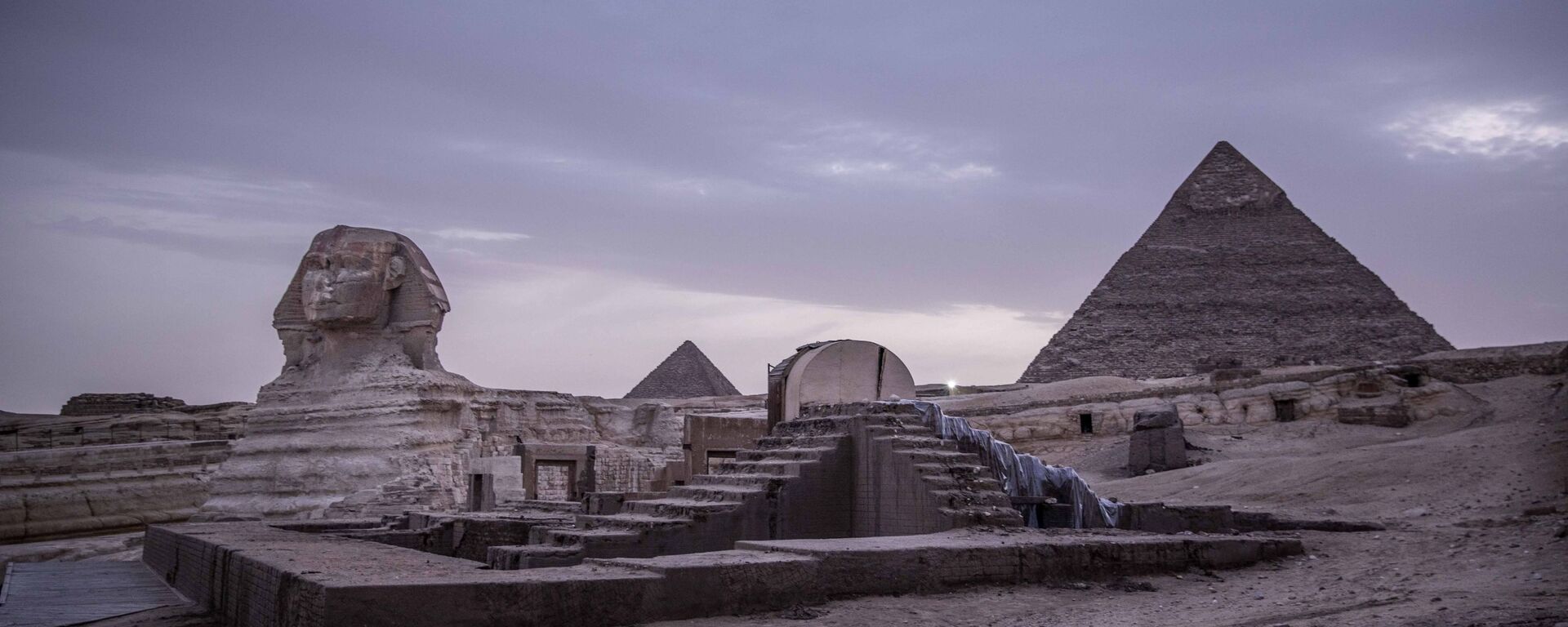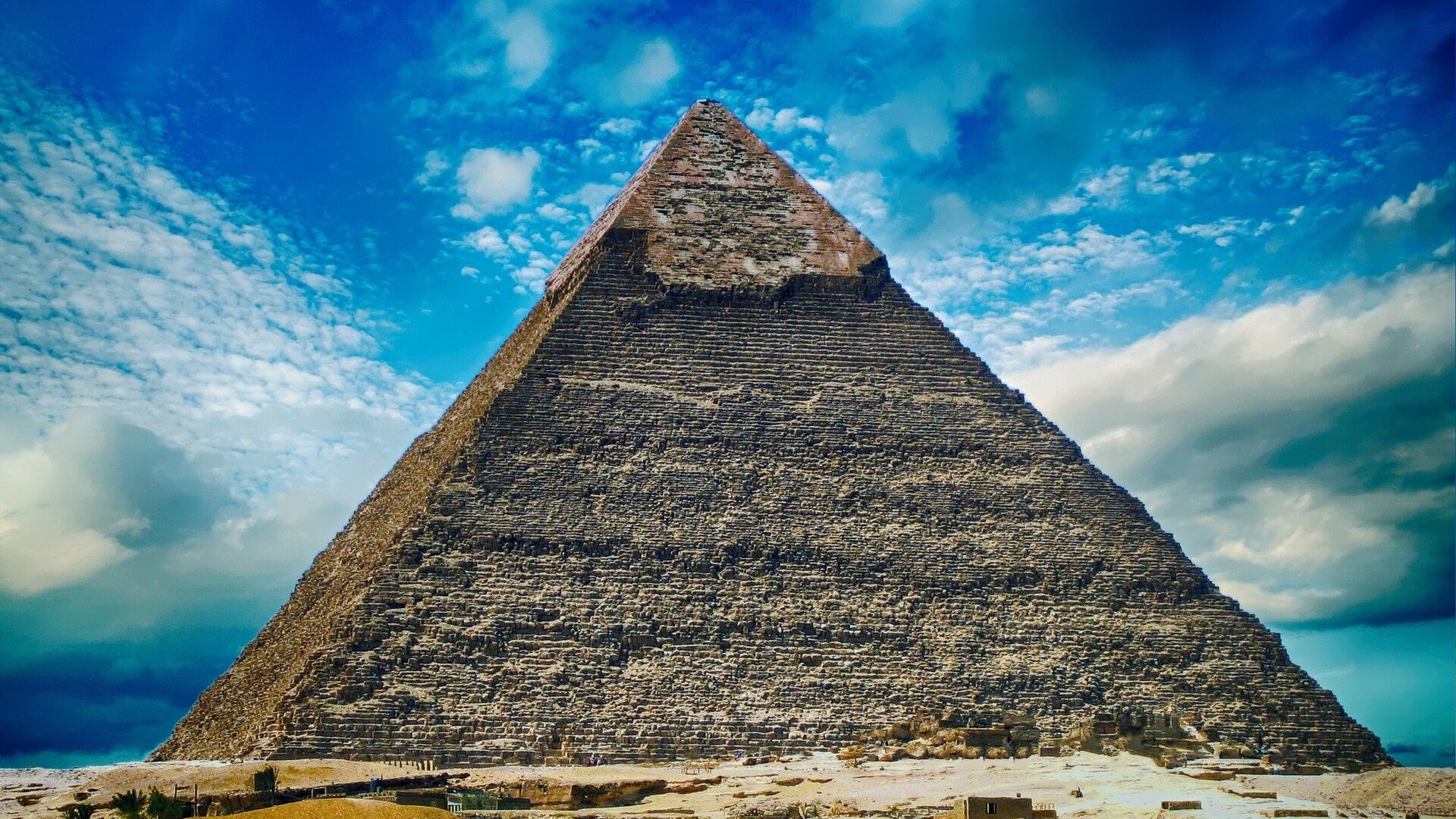https://sputnikglobe.com/20220301/scientists-seek-to-use-cosmic-rays-to-probe-secrets-hidden-within-great-pyramid-of-giza-1093496075.html
Scientists Seek to Use Cosmic Rays to Probe Secrets Hidden Within Great Pyramid of Giza
Scientists Seek to Use Cosmic Rays to Probe Secrets Hidden Within Great Pyramid of Giza
Sputnik International
The Explore the Great Pyramid team postulates that the telescopes they intend to use in their quest are much more sensitive than “the equipment that has... 01.03.2022, Sputnik International
2022-03-01T18:53+0000
2022-03-01T18:53+0000
2022-03-01T18:53+0000
science & tech
egypt
great pyramid of giza
interior
study
https://cdn1.img.sputnikglobe.com/img/107491/28/1074912804_0:180:1920:1260_1920x0_80_0_0_091245b1bd207f0ef3731ddad6af580b.jpg
A team of scientists seeks to use cosmic-ray muons in order to look deep into the Great Pyramid of Giza and try to map its internal structure.According to the Universe Today website, the so-called Explore the Great Pyramid (EGP) mission is going to use muon tomography to image the interior of the legendary landmark.This particular method had already been used to study the pyramid in the 1960s by American physicist Luis Alvarez and his team. And in 2017, the ScanPyramid project employed muon tomography and infrared thermography to examine the pyramid's interior, discovering the "Big Void" – a massive void above the Grand Gallery– in the process.The EGP team, however, reportedly says that their muon telescope system is going to be much more powerful than the previously employed muon imaging.The EGP team, which currently works on building telescopes and strives to determine which data-handling techniques they are going to use, hopes that their effort will yield the first actual tomographic – rather than 2D – image of the Great Pyramid, the media outlet adds.
https://sputnikglobe.com/20220123/archeologists-uncover-two-giant-sphinxes-built-3300-years-ago-1092457837.html
egypt
great pyramid of giza
Sputnik International
feedback@sputniknews.com
+74956456601
MIA „Rossiya Segodnya“
2022
News
en_EN
Sputnik International
feedback@sputniknews.com
+74956456601
MIA „Rossiya Segodnya“
Sputnik International
feedback@sputniknews.com
+74956456601
MIA „Rossiya Segodnya“
science & tech, egypt, great pyramid of giza, interior, study
science & tech, egypt, great pyramid of giza, interior, study
Scientists Seek to Use Cosmic Rays to Probe Secrets Hidden Within Great Pyramid of Giza
The Explore the Great Pyramid team postulates that the telescopes they intend to use in their quest are much more sensitive than “the equipment that has recently been used at the Great Pyramid."
A team of scientists seeks to use cosmic-ray muons in order to look deep into the Great Pyramid of Giza and try to map its internal structure.
According to the Universe Today website, the so-called Explore the Great Pyramid (EGP) mission is going to use muon tomography to image the interior of the legendary landmark.
This particular method had already been used to study the pyramid in the 1960s by American physicist Luis Alvarez and his team. And in 2017, the ScanPyramid project employed muon tomography and infrared thermography to examine the pyramid's interior, discovering the "Big Void" – a massive void above the Grand Gallery– in the process.
The EGP team, however, reportedly says that their muon telescope system is going to be much more powerful than the previously employed muon imaging.
"We plan to field a telescope system that has upwards of 100 times the sensitivity of the equipment that has recently been used at the Great Pyramid, will image muons from nearly all angles and will, for the first time, produce a true tomographic image of such a large structure," the team stated.

23 January 2022, 00:42 GMT
The EGP team, which currently works on building telescopes and strives to determine which data-handling techniques they are going to use, hopes that their effort will yield the first actual tomographic – rather than 2D – image of the Great Pyramid, the media outlet adds.
"The Exploring the Great Pyramid Mission takes a different approach to imaging large structures with cosmic-ray muons. The use of very large muon telescopes placed outside the structure, in our case, the Great Pyramid of Khufu on the Giza plateau, can produce much higher resolution images due to the large number of detected muons," the team said. "In addition, by moving the telescopes around the base of the pyramid, true tomographic image reconstruction can be performed for the first time."


